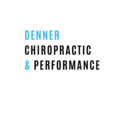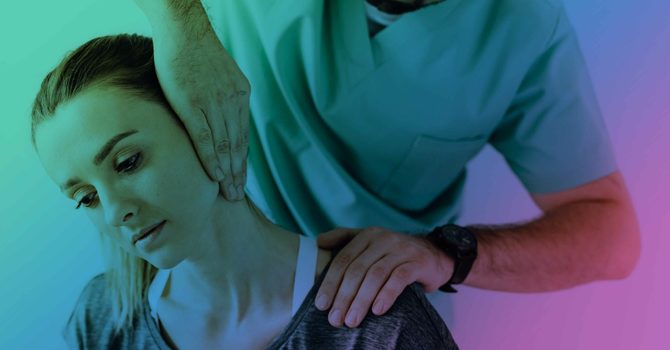
Top 3 Causes Of Elbow Pain. Powerful and Effective Treatment Options
The elbow is a vital joint that connects the humerus with the radius and ulna bones. Comprising three distinct joints and multiple attachment sites for various muscles and ligaments. The primary joint within the elbow is the ulnohumeral joint, classified as a "ginglymus joint" or hinge joint, limiting its movement to flexion and extension along a single plane. Additionally, the radioulnar joint facilitates pronation and supination, enabling the rotation of one's palm in an upward or downward direction.
The elbow is a common site for injury because of the location the joint is placed in. Similar to the knee joint the elbow is sandwiched between the 2 key structures, the hand/ wrist and shoulder. The elbow relays largely on the movement and stability above and below.
Elbow pain can stem from various factors. Obtaining a clear understanding of the true underlying cause is essential for accurate diagnosis and improved outcomes. By pinpointing the specific source of your pain, we can provide more targeted and effective treatment, leading to better overall results.
In this article we are going to discuss the top 3 causes of elbow pain and treatment options you can do today to find relief!
We can discover a wealth of information about the three most common conditions by simply answering some related questions. People often ask these kinds of questions when they visit our office, and they can help us figure out where your pain is coming from.
1. Is my elbow pain coming from my neck?
2. Does my shoulder have anything to do with my elbow?
3. What is a tendinopathy? How can I treat the soft tissue in my elbow?
Is my elbow pain coming from my neck?
When someone experiences elbow pain, it's not always the elbow itself that's to blame. Surprisingly, the source of the pain can often be traced back to the neck—a phenomenon known as joint derangement, as described by the Mckenzie Institute.
When there's joint dysfunction in the cervical spine, it can irritate the nerves that exit the spine and result in referred pain elsewhere in the body. This can be similar to the example of someone feeling arm pain during a heart attack. Pain has the ability to travel and cause discomfort from unexpected areas.
The EXPOSS Study (Extremity Pain of Spinal Source) specifically investigates this mechanism, revealing that 44% of the time, elbow pain stems from issues in the neck. This fact is crucial to bear in mind because solely focusing on the site of pain can often lead to overlooking the true underlying cause.
Does my shoulder have anything to do with my elbow?
To put it simply, the answer is yes, but let's delve into the details. The elbow joint bears a resemblance to the knee joint in terms of its placement between two vital structures. Specifically, the elbow sits between the hand/wrist and the shoulder. Dysfunctions occurring above or below the joint can have a cascading effect. This is particularly true when it comes to the shoulder's impact on the elbow.
During everyday activities or sports, if the shoulder lacks proper stabilization and correct movement, it can create tension and strain in the muscles surrounding the elbow. To better understand, let's consider the example of a throwing athlete. When an athlete performs their throwing motion, if the shoulder isn't functioning optimally, it places the elbow in an unfavorable position—one it isn't designed for. This is due to the significance of scapular stability.
The scapula, a bone in the shoulder girdle, plays a crucial role in providing attachment sites for numerous muscles and ensuring stability. When we engage the wrong muscles excessively during movement, it can lead to joint decentration and result in pain and dysfunction.
What is a tendinopathy? How can I treat the soft tissue in my elbow?
A tendinopathy is a broad term used to describe a problem with the tendon. Although tendonitis is commonly mentioned, true cases of tendonitis are actually quite rare. Tendonitis is characterized by chronic inflammation and the presence of small microdamage in the tendon. On the other hand, tendinopathy simply implies that the tendon is responsible for your pain and dysfunction.
If you're experiencing elbow pain caused by a genuine tendinopathy, the most effective treatment approach involves providing the tendon with eccentric loading. Several studies have demonstrated that eccentric loading is instrumental in enhancing tendon strength and resilience. Eccentric exercises are distinguished by muscle contractions that occur while the muscle is being stretched. By incorporating eccentric exercises into your treatment regimen, you can promote optimal healing and rehabilitation for your tendon.
Another potential cause of elbow pain often associated with "tendonitis" is fascial densification. Antonio Stecco and the Facial Manipulation Institute have coined this term. Fascial densification refers to areas on the body where there is an increased presence of fascial adhesions. Fascia is a thin layer of connective tissue interwoven with your muscles. When the fascia becomes entangled or wound up, it can lead to pain in specific regions.
One common site of fascial densification is found on the inside and outside of the elbow, known as the medial and lateral epicondyles. These locations are also where "golfer's elbow" and "tennis elbow" occur.
Final Thoughts
Gaining a thorough understanding of the underlying cause of your elbow pain is crucial as it serves as the fundamental starting point. By accurately diagnosing the source of your pain, we can develop a tailored plan that ensures swift and effective recovery.
It's worth noting that if you've been enduring elbow pain without success from conventional treatment methods, it is possible that an incorrect diagnosis may have been initially provided. This highlights the importance of obtaining an accurate diagnosis to ensure appropriate and targeted treatment.
Denner Chiropractic & Performance | Charlotte, North Carolina
At Denner Chiropractic & Performance located in Charlotte, North Carolina our rehab chiropractic care incorporates rehabilitation, joint manipulation, soft tissue, and dry needling to help you achieve pain-free movement in life and sport. We are more than happy to discuss any concerns or questions you have about your condition or how we can help. Located on our main page or in our resource library tab is a sign-up for a free Discovery Call. During this time we will get to know you and your pain points. Let’s see if we are the right provider for you, schedule your Discovery Call today!

Denner Chiro Performance
Contact Me



